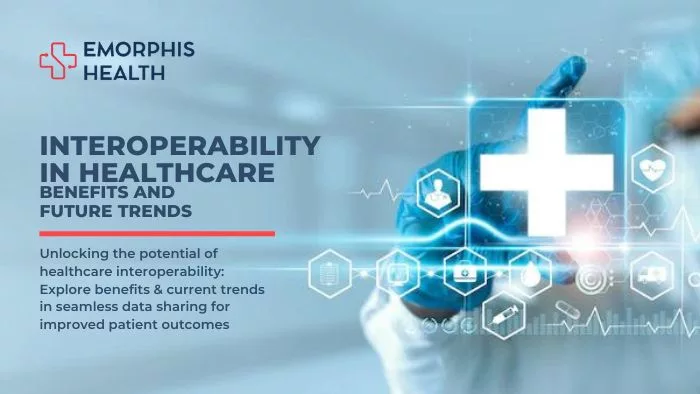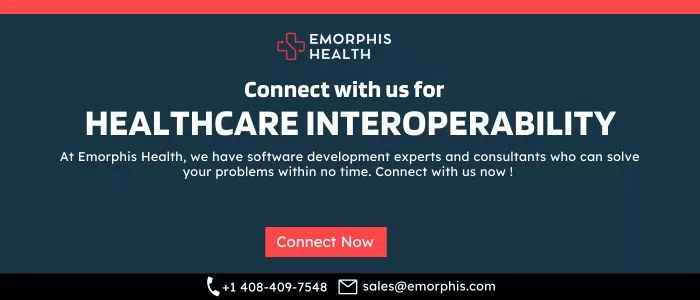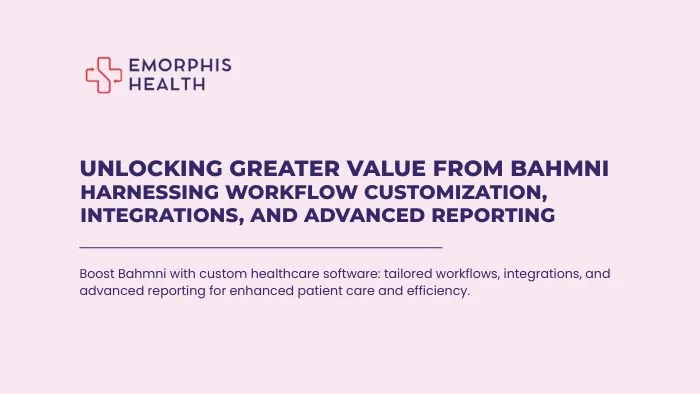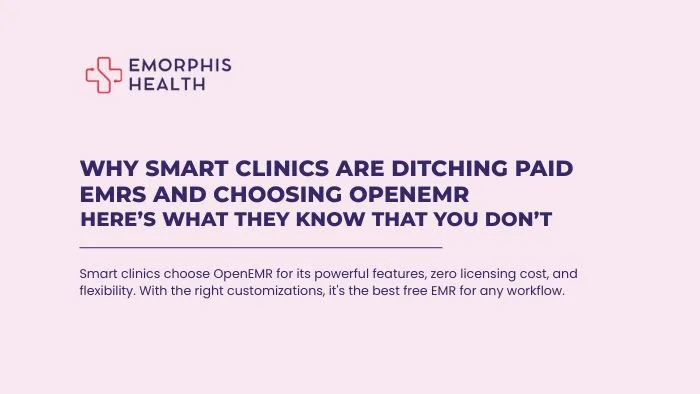Introduction to Healthcare Interoperability
See Contents
What is Healthcare Interoperability?
In today’s rapidly evolving healthcare landscape, the ability to seamlessly exchange and integrate data between different healthcare systems and stakeholders is crucial. This capability is known as healthcare interoperability. Interoperability refers to the power of diverse healthcare information systems, devices, and applications to communicate, exchange data, and also utilize shared information coherently.
At its core, healthcare interoperability aims to ensure that patient information, including medical records, test results, treatment plans, and other relevant data, can be accessed and utilized when and where it is needed. The goal is to enhance patient care, improve healthcare outcomes, and optimize the overall efficiency of the healthcare delivery process.
The Significance of Interoperability in Healthcare
Interoperability plays a pivotal role in addressing some of the most pressing challenges the healthcare industry faces today. In fact, one of the primary benefits of interoperability is improved coordination and continuity of care. When healthcare providers have access to comprehensive patient data from various sources, they can make more informed decisions, leading to better diagnoses and treatment plans.
Moreover, healthcare interoperability facilitates patient engagement and empowerment. Patients can access their health information more easily, in fact, allowing them to actively participate in their own care decisions and management. As a matter of fact, this empowerment fosters a patient-centered approach to healthcare, promoting better health outcomes and patient satisfaction.
Another critical aspect of interoperability is its potential to streamline healthcare workflows. By eliminating manual data entry and redundant processes, interoperability reduces administrative burdens and also frees up valuable time for healthcare professionals. This improved efficiency also translates to cost savings for healthcare organizations.

In addition, interoperability enables data-driven decision-making. Health systems can analyze large datasets to identify patterns, trends, and also potential areas for improvement in public health initiatives for population health management. This data-driven approach can help identify and address health disparities and improve overall community health.
Interoperability vs. Integration: Understanding the Difference
It is essential to distinguish between interoperability and integration in the context of healthcare. As a matter of fact, interoperability refers to the ability of disparate healthcare systems to exchange data and make sense of shared information. It ensures that data can flow smoothly between systems, regardless of the vendor or technology used.
Integration, on the other hand, involves the unification of various healthcare systems into a single, cohesive system. In fact, the integration allows different components to work together seamlessly, offering a unified user experience. It often involves merging data from various sources into a single platform, such as an Electronic Health Record (EHR) system.
Get in touch for healthcare integration services.
Here is a more clarified view that compares interoperability and integration in the context of healthcare.
Interoperability Vs Integration
| Aspect | Interoperability | Integration |
| Definition | Interoperability refers to the ability of different healthcare systems and applications to exchange and in fact, use data seamlessly. | Integration involves combining separate healthcare systems or applications into a single unified system that shares data and also functions cohesively. |
| Data Exchange | Interoperability focuses on the ability to exchange data between different systems, in fact, even if they are from different vendors or use different data formats. | The integration allows systems to share data and functions in a way that creates a unified user experience and also consistent data access. |
| Scope | Interoperability is broader and often extends beyond a single organization, enabling data exchange between various healthcare entities and also stakeholders. | Integration typically takes place within a single organization or among systems owned by the same entity. |
| Data Compatibility | Interoperability emphasizes the use of standardized data formats and communication protocols to ensure seamless data exchange. | Integration may involve data mapping and also transformation to reconcile differences in data structures and formats. |
| Communication | Interoperable systems can communicate with each other without significant modifications or customization. | Integration requires establishing communication channels and protocols to facilitate data exchange and interaction. |
| Level of Cooperation | Interoperability necessitates cooperation between different organizations and stakeholders to establish common standards. | Integration requires collaboration between different departments or divisions within a single organization. |
| Use Case | Interoperability is crucial for sharing patient data across various healthcare providers, promoting care coordination, and also patient safety. | Integration is essential for consolidating data from different departments or systems, enhancing efficiency and also data consistency within an organization. |
| Benefits | Interoperability promotes seamless data exchange, enhanced care coordination, and also better patient outcomes across the healthcare ecosystem. | Integration streamlines workflows reduces redundancy, improves data consistency, and also supports a unified user experience within a single organization. |
| Challenges | Achieving interoperability may involve overcoming technical, organizational, and regulatory barriers to data sharing. | Integration challenges include data mapping complexities, system compatibility issues, and also potential resistance to change within an organization. |
Both interoperability and integration are essential in healthcare to support efficient data management, promote care coordination, and improve patient outcomes.
Benefits of Healthcare Interoperability

1. Improved Patient Care and Outcomes
One of the most significant benefits of healthcare interoperability is in fact its direct impact on patient care and outcomes. When healthcare providers can access comprehensive and up-to-date patient information from various sources, they can make more informed and timely decisions. This leads to improved diagnoses, personalized treatment plans, and also better patient management.
For example, imagine a scenario where a patient visits a specialist for a particular health concern. With interoperability in place, the specialist can access the patient’s complete medical history, including past diagnoses, medications, and also allergies. In fact, armed with this comprehensive view of the patient’s health, the specialist can make more accurate assessments and avoid potential adverse reactions to medications or treatments.
Interoperability also makes it easier for the various healthcare professionals involved in a patient’s treatment to coordinate care. Primary care physicians, specialists, pharmacists, and other healthcare professionals can collaborate more effectively and also share vital information, leading to better-coordinated care and smoother transitions between care settings.
2. Enhanced Patient Engagement and Empowerment
As a matter of fact, interoperability empowers patients to take an active role in their healthcare journey. In fact, access to their health records and real-time health data enables patients to make informed decisions about their care, understand treatment options, and actively participate in managing chronic conditions.
Patient portals and mobile health applications, made possible by healthcare interoperability, allow individuals to securely access their health information from anywhere, at any time. Also, patients can view test results, schedule appointments, request medication refills, and communicate with their healthcare providers through these digital platforms.
As patients become more engaged in their care, they are more likely to adhere to treatment plans, follow preventive measures, and also adopt healthier lifestyles. This, in turn, can lead to improved health outcomes and a reduction in avoidable hospital readmissions.
Learn about top advancements and trends in Remote Patient Monitoring App Development.
3. Streamlined Workflows and Efficiency
Healthcare interoperability streamlines workflows and reduces administrative burdens, benefiting healthcare providers and organizations. In fact, by automating data exchange between systems, healthcare professionals spend less time manually entering data and more time focusing on patient care.
For example, interoperability between an EHR system and a laboratory information system allows test results to be automatically transmitted to the patient’s electronic record. This eliminates the need for manual data entry and also ensures that critical information is readily available to the healthcare team.
Moreover, interoperability facilitates electronic prescribing, enabling healthcare providers to send prescriptions directly to pharmacies. This not only saves time but also reduces the risk of medication errors and enhances medication adherence.
In large healthcare systems or networks, interoperability enables seamless sharing of patient data across different facilities and care settings. This continuity of information ensures that patients receive consistent and coordinated care, regardless of where they seek medical attention.
3. Data-Driven Decision-Making and Insights
Healthcare interoperability contributes to the generation of vast amounts of healthcare data. Through interoperable systems, health organizations can collect and analyze data from diverse sources, providing valuable insights for population health management, research, and also public health initiatives.
For instance, interoperability allows for the aggregation and analysis of data related to disease prevalence, treatment efficacy, and healthcare utilization patterns. This information can help identify trends and disparities in healthcare delivery and also inform the development of evidence-based policies and interventions.
By harnessing the power of big data, healthcare systems can move towards predictive and also preventive care models. Early identification of at-risk populations and timely interventions can lead to better health outcomes and cost savings for both patients and healthcare providers.
Read more about Interoperability Levels, a comprehensive guide for healthcare organizations.
For a more clarified view here are some of the many benefits of healthcare interoperability, and the actual impact can vary based on the implementation and also the context of the interoperable systems.
Benefits of Interoperability in Healthcare
| Metric | Definition and Benefits |
| Improved Care Coordination | Interoperability enables seamless exchange of patient data between healthcare providers and facilities, also leading to better care coordination. In fact, this results in reduced duplicative tests and treatments, faster diagnosis, and also improved patient outcomes. |
| Enhanced Patient Safety | Access to comprehensive patient data allows healthcare providers to make informed decisions, reducing medication errors and also adverse events. In fact, interoperability also supports the timely communication of critical patient information during emergencies, ensuring appropriate interventions. |
| Increased Efficiency and Productivity | Interoperable systems streamline workflows, reducing administrative burden and also allowing healthcare professionals to focus more on patient care. In fact, this efficiency leads to shorter wait times, improved patient satisfaction, and better staff productivity. |
| Data-Driven Decision-Making | Interoperability provides access to real-time patient data, enabling evidence-based decision-making. Healthcare providers can leverage analytics and also AI-driven insights to tailor treatment plans and improve population health management. |
| Seamless Telemedicine and Remote Monitoring | Interoperability supports telehealth and remote monitoring initiatives, to the extent that in fact, it allows patients to receive quality care from the comfort of their homes. Remote access to patient data enables virtual consultations and also continuous monitoring of chronic conditions. |
| Interoperable Research and Public Health | Healthcare interoperability facilitates data sharing for research purposes, leading to advancements in medical knowledge and also new treatment discoveries. It also supports public health efforts, such as disease surveillance and outbreak tracking. |
| Cost Savings and Resource Utilization | Interoperability reduces healthcare costs through decreased redundant tests, readmissions, and also unnecessary treatments. Efficient resource utilization results in financial savings for healthcare organizations and patients alike. |
| Patient Empowerment | Interoperability enables patients to access and manage their health information through patient portals and also health apps. In fact, empowered patients can actively engage in their care decisions and contribute to better health outcomes. |
| Interoperability as a Key Quality Indicator | Healthcare interoperability has become a crucial quality indicator for healthcare organizations. Healthcare providers with robust interoperable systems are more likely to be perceived as innovative and also patient-centered. |
| Support for Public Health Initiatives | Interoperability assists in monitoring population health trends, identifying public health challenges, and also formulating effective strategies for disease prevention and health promotion. |
Optimize the future of your healthcare organization with Healthcare IT Consulting Services.
Return on Investment (ROI) with Interoperability in Healthcare

In the context of healthcare interoperability, Return on Investment (ROI) refers to the tangible and intangible benefits that healthcare organizations can gain from investing in interoperable systems and also data exchange initiatives. While implementing interoperability solutions may involve initial costs, the long-term ROI can be substantial.
One significant ROI aspect is cost savings through improved operational efficiency. In fact, interoperability reduces redundant tests, streamlines care coordination, and facilitates data-driven decision-making, leading to reduced healthcare costs and better resource utilization. Additionally, interoperability contributes to enhanced patient outcomes and satisfaction, leading to improved patient retention and loyalty.
Moreover, interoperable data exchange empowers healthcare providers to offer personalized, evidence-based care, leading to improved clinical outcomes and patient safety. Ethical considerations such as patient privacy and data security also contribute to a positive ROI, as patients are more likely to trust healthcare providers who prioritize data protection. Ultimately, by focusing on interoperability and its related benefits, healthcare organizations can achieve a positive ROI through improved efficiency, patient outcomes, and patient trust in the long run.
Here is a table that provides various aspects of why a healthcare organization should go with healthcare interoperability solution implementation.
Differences between a Healthcare organization with interoperability and one without interoperability
| Aspect | Healthcare Organizations with Interoperability | Healthcare Organizations without Interoperability |
| Care Coordination | Streamlined care coordination between healthcare providers. Access to comprehensive patient data for timely decision-making. | Fragmented care coordination due to limited data exchange. Healthcare providers work with partial patient information, potentially leading to delays and also duplicated efforts. |
| Data Accessibility | Real-time access to patient records, lab results, and also medical histories. | Limited access to patient information, requiring manual exchange or relying on patient recollections, leads to potential data inaccuracies. |
| Patient Engagement | Empowered patients with access to their health records and the ability to participate in care decisions. | Limited patient involvement in care planning and also lack visibility into their health information. |
| Efficiency and Productivity | Streamlined workflows, reduced administrative burden, and optimized resource utilization. | Inefficient processes increased administrative workload and potential underutilization of resources. |
| Clinical Decision-Making | Data-driven decision-making is supported by analytics and AI insights. | Reliance on individual knowledge and expertise without access to comprehensive patient data. |
| Telehealth and Remote Monitoring | Seamless integration of telehealth and remote monitoring initiatives. | Challenges in implementing telehealth services and remote monitoring due to limited data exchange capabilities. |
| Research and Public Health | Data sharing for research and public health initiatives. | Limited contribution to research and public health efforts due to restricted data sharing. |
| Patient Safety | Improved patient safety through accurate and complete data exchange. | Potential patient safety risks due to incomplete or delayed data sharing. |
| Cost Savings | Cost savings through reduced redundant tests and improved resource utilization. | Potential cost inefficiencies from duplicated tests and less optimized resource allocation. |
| Interoperability as a Quality Indicator | Perceived as a quality-focused and patient-centered organization. | May be perceived as lacking innovation and behind in adopting modern healthcare practices. |
Healthcare interoperability is helpful in many contexts.
Healthcare organizations that prioritize interoperability enjoy streamlined care coordination, enhanced patient engagement, increased efficiency, and improved patient safety. They can leverage data-driven decision-making and support research and public health initiatives more effectively. On the other hand, organizations without interoperability face challenges in coordinating care, accessing patient data, and engaging patients. They may experience inefficiencies, limitations in clinical decision-making, and difficulties in supporting telehealth and research efforts. Interoperability has become a crucial factor in determining the overall quality and patient-centeredness of healthcare organizations.
Check a guide on healthcare Interoperability and connect with us for more details.
Future Trends in Healthcare Interoperability
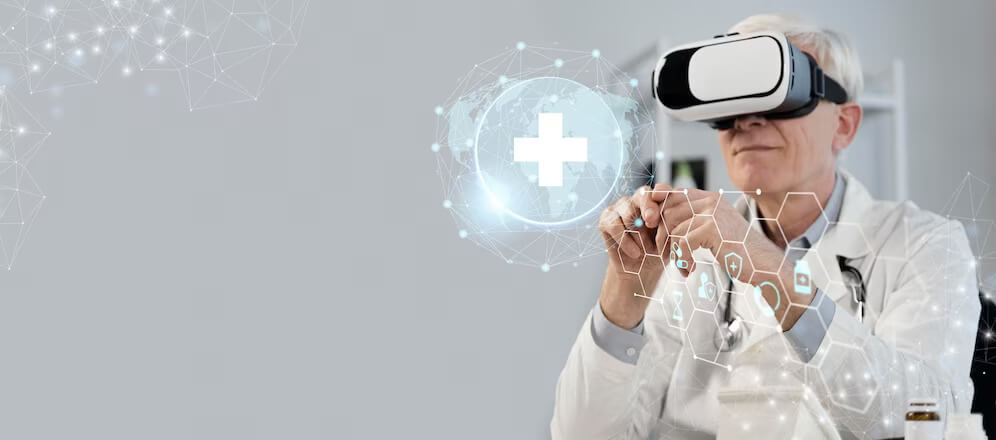
As a matter of fact, healthcare interoperability continues to evolve rapidly, driven by advancements in technology, changing patient expectations, and the growing need for data-driven decision-making in healthcare. Several future trends are poised to shape the landscape of healthcare data exchange and also integration. Let’s explore these trends in detail:
a. AI-Driven Healthcare Interoperability
Artificial Intelligence (AI) will play a significant role in shaping the future of healthcare interoperability. in fact, AI-driven applications can facilitate data mapping, translation, and normalization between disparate healthcare systems, promoting seamless data exchange. Natural Language Processing (NLP) algorithms can extract relevant information from unstructured data sources, such as clinical notes and medical literature, making it accessible for integration. Additionally, AI-powered predictive analytics can anticipate patient needs and optimize care pathways, enhancing care coordination and clinical decision-making across the healthcare continuum.
Check our insights on Generative AI in Healthcare.
b. Blockchain for Secure Data Exchange
Blockchain technology holds immense potential in ensuring secure and decentralized data exchange in healthcare. In fact, blockchain’s distributed ledger system can provide an immutable record of patient data access and modifications, ensuring data integrity and transparency. Smart contracts in blockchain can automate data-sharing agreements while preserving patient consent and privacy preferences. Healthcare organizations are increasingly exploring blockchain-based solutions to address data security and privacy concerns while promoting efficient data exchange among stakeholders.
c. Federated Interoperability Solutions
Federated interoperability models are gaining traction, particularly in large healthcare ecosystems. These models allow different healthcare entities, such as hospitals, clinics, and research institutions, to maintain control over their data while enabling secure sharing with authorized partners. In fact, federated models use standardized APIs and data exchange protocols to facilitate seamless data access and sharing, improving care coordination and research collaboration across regional or national healthcare networks.
d. Internet of Medical Things (IoMT) Integration
The proliferation of medical devices and wearables in IoMT presents both opportunities and challenges in healthcare interoperability. Integrating IoMT devices with existing healthcare systems will become increasingly important to leverage the continuous flow of real-time patient data. As a matter of fact, standardization of data formats and communication protocols for IoMT devices will be critical for their successful integration, allowing healthcare providers to monitor patients remotely and make informed decisions based on real-time health data.
Get in touch for IoMT software development. We are a top recommended IoT development company.
e. Patient-Driven Interoperability
The future of interoperability will see a shift toward patient-driven data exchange. Patients will have more control over their health data and also can grant permission to share specific information with healthcare providers of their choice. In fact, patient portals and health apps will play a central role in facilitating data access and sharing, empowering patients to actively participate in their care and collaborate with their healthcare teams effectively.
f. Unified Health Records
The concept of unified health records aims to bring together all aspects of a patient’s health data into a single, comprehensive record. In fact, this unified record includes clinical data, genomic information, social determinants of health, and patient-generated data. By integrating diverse data sources into a unified format, healthcare providers can have a more holistic view of the patient’s health, enabling personalized care plans and also more accurate diagnoses.
g. Cloud-Based Interoperability Solutions
Cloud-based interoperability solutions will continue to gain popularity due to their scalability, cost-effectiveness, and ease of implementation. Cloud platforms offer a centralized environment for data storage and exchange, in fact, allowing healthcare organizations to access patient information from various locations securely. The cloud’s flexibility supports the rapid deployment and integration of new healthcare applications, fostering innovation and also collaboration.
Get in touch with our Cloud Computing experts for consulting on cloud solutions in healthcare.
h. Standardization and Data Governance
As interoperability expands, the need for robust data standardization and governance becomes more critical. Healthcare organizations, policymakers, and also healthcare technology vendors must collaborate to develop and adhere to standardized data formats, communication protocols, and data governance policies. As a matter of fact, this standardization will ensure seamless data exchange and facilitate data analytics across diverse healthcare systems.
i. Global Health Data Exchange
The future of healthcare interoperability will see efforts to promote cross-border data exchange and collaboration to address global health challenges. As a matter of fact, international interoperability initiatives will enable data sharing and research collaboration between healthcare organizations across different countries, advancing medical knowledge and improving healthcare outcomes worldwide.
j. Advancements in Privacy and Security Measures
To build and maintain patient trust, future healthcare interoperability solutions will focus on advanced privacy and also security measures. Implementing robust encryption, multi-factor authentication, and blockchain-based data access controls will safeguard patient data during data exchange and storage, reducing the risk of data breaches and unauthorized access.
Do follow us and check a guide to Healthcare App Development.
Conclusion
The future of healthcare interoperability holds excellent promise, driven by cutting-edge technologies, patient-centered approaches, and also collaborative efforts among healthcare stakeholders. AI, blockchain, IoMT, and patient-driven data exchange are among the key trends that will shape the future of healthcare data exchange and integration, ultimately improving patient care, research capabilities, and also healthcare efficiency on a global scale. Standardization, data governance, and data security will play pivotal roles in realizing the full potential of interoperability in the ever-evolving healthcare landscape.
Before you go do not forget to check our detailed article on Healthcare Software Product Engineering.

